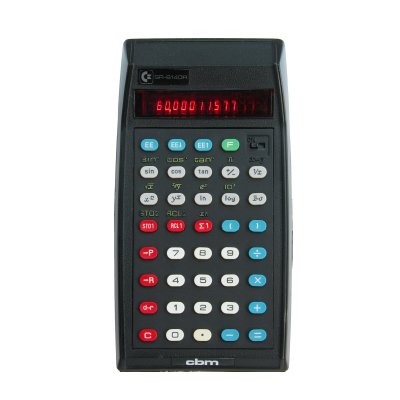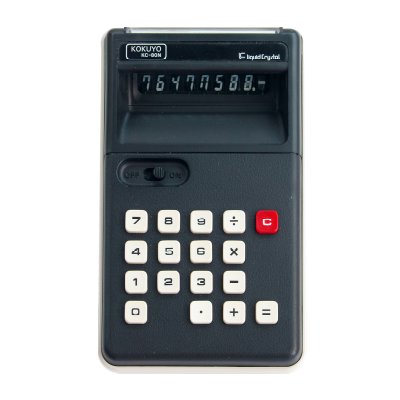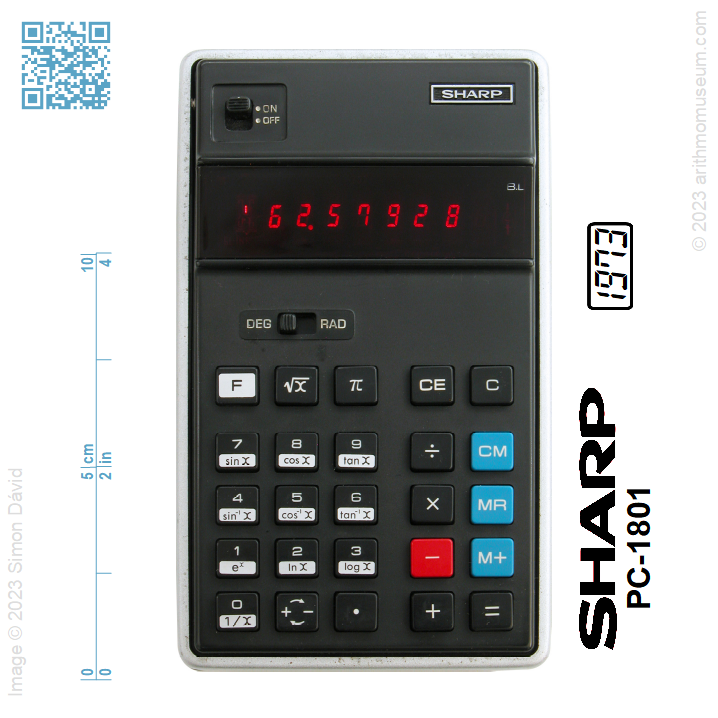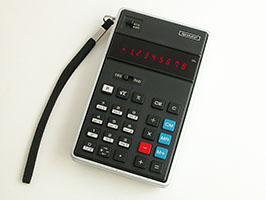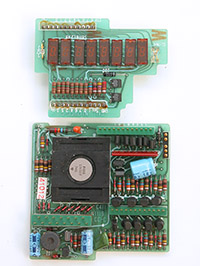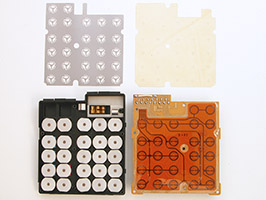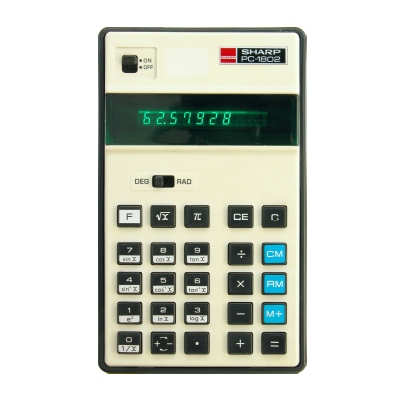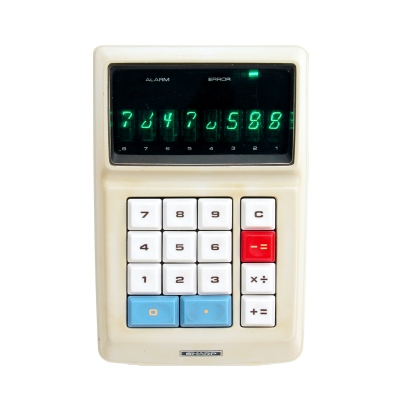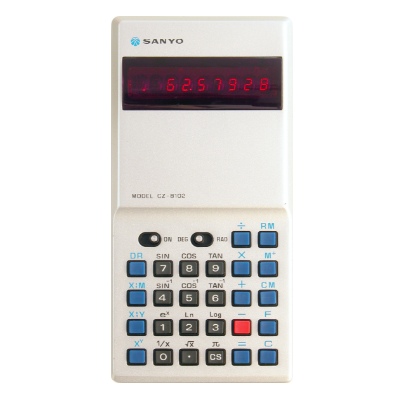Sharp PC-1801
Brief History
During the cooperation between North American Rockwell and Hayakawa Electric, later Sharp, the former partner built the LSI integrated circuits, and latter produced finished calculators using them. Although Rockwell itself started production of calculators, first only for OEM partners, and then from 1974 it appeared on the market with its own branded models, nevertheless the American-Japanese cooperation continued until 1975. After the success of the world's first and for a long time only scientific pocket calculator, the Hewlett Packard 35, Rockwell immediately started designing a simplified, inexpensive scientific calculator chip. The result was the circuit model 15470 (according to the old numbering scheme), or the A4000, which has been used in PC-1801 at the end of 1973. Giving some advantage, the 15471 (A4001) circuit, which also provides power calculations, appeared in early 1974, and because it became commercially available, it started the first major wave of scientific pocket calculators; countless machines appeared using this circuit. The common feature of the two circuits is that it can only perform operations in the number range of standard eight-digit calculators, and it is not even capable of exponential display, yet it became a milestone in the almost instantaneous obsolescence of slide rules. Sharp's first model could be operated with 5 penlight batteries, or with a battery pack made of the same number of rechargeable batteries, or with an adapter, but its power consumption — thanks to its large seven-segment LED display elements — was quite high. Less than half a year later, the PC-1802 appeared, which did not differ from its predecessor in operation, but received a vacuum fluorescent display tube with lower power consumption. Later, scientific pocket calculators made with Rockwell-developed chips appeared one after the other, which were replaced in 1975-76 by more modern types built with domestically manufactured circuits, so that Sharp could finally overtake the products of competing American companies in the 1980s.
| Manufacturer: | Sharp Corporation (Japan) |
| Mfg. date: | 1973-74 |
| Size: | 8,8×14,8×3,5 cm |
| Weight (ready for operate): | n.a. |
| Type: | scientific |
| Capacity: | 8 digits (input/display) 8 digits (internal precision) |
| Operating logic: | algebraic |
| CPU: | Rockwell 15470 (A4000) |
| Registers: | 2 standard (with saving the pending operation) 1 constant (with saving the pending operation) 1 memory (with aritmetic) |
| Features: | +/-change sign (direct entry of negative numbers) Ffloating-point notation Sqrsquare root pivalue of pi (3.1415..) can be recalled 1/xreciprocal trigtrigonometrical functions (sin, cos, tan and inverses: arcsin, arccos, arctan) logexponential and logarithmical functions (10- and e-base) |
| Display: | 8+1 digit LED |
| Power: | 5×AA battery or adaptor |
| Test results: | trigonometry:result of sin-1(cos-1(tan-1(tan(cos(sin(60°)))))), reference value: 60. 62.57928 exponential:result of 0.999160000, reference value (first 14 digits): 3.0068804206375×10-70 - |
Similar items
